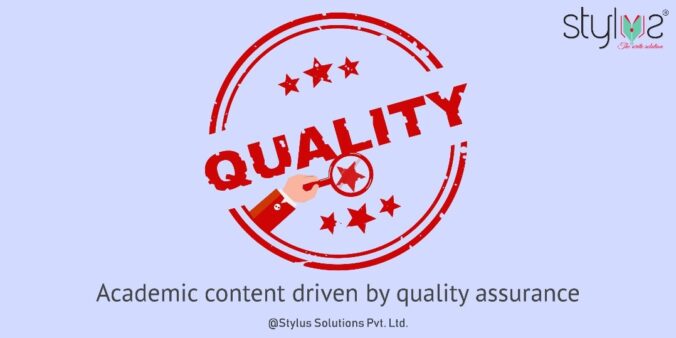The experience in writing varies from person to person. With academic writing, the quality of your manuscript significantly affects the impact of your work. Editing and proofreading are two crucial stages before your final submission. To make sure these stages are completed correctly, many would hire companies offering academic editing services in Mumbai, such as Stylus Solutions, who can provide thoroughly edited manuscript.
After writing the first draft of your manuscript, you need to edit the same. However, you will be performing proofreading on the final draft later.
However, there are a few basic differences between editing and proofreading that you need to be aware of.
What is Editing?
Editing is one of the essential steps in writing. It is the process of improving a piece of writing to make it ready for publication.
There are two types of edit you can perform: the ongoing edit and the draft edit. In the ongoing edit, you edit while writing. Here, you change a word or sentence, and if you come up with some new ideas, you again go back to edit that part.
However, in the draft edit, you finish your writing, gather all the documents, and then edit. You start with editing only after you are satisfied with the content and consistency of your document. It involves analysing text to inspect technical aspects of the content.
Editing is where you change and fix the overall quality of your writing. During the editing process, the language should become clearer. Many companies involved in academic copy-editing services in India tend to hire experts who can perform such a process in no time.
You can carry out editing based on the content, overall outline, paragraph’s structure, clarity, style and citations. It needs to address the important features of writing, as you can reduce the word count if required.
What is Proofreading?
Proofreading is done after the editing process to make sure that your final document is error-free. At this stage, you will be correcting the grammatical, spelling, punctuation and language errors.
Proofreaders spend a considerably shorter time on the proofreading process to find any noticeable errors. Some proofreaders also work on the hard copies of your document to look for any errors introduced in the design process. They check for page breaks, captions, page layout, page number, table of contents, index, etc. Proofreading does not reduce the word count. Academic copy-editing services in India are known to provide error-free and clear document, enhancing the text quality.
While proofreading, do not rely on spelling and grammar checkers. These tools have a limited dictionary, and so they cannot identify every other mistake. Read slowly every word of the manuscript to maintain the focus on finding errors.
Always keep the editing and proofreading processes separate from each other. You will not be able to recognise all errors if you are also trying to revise your manuscript simultaneously.
Editing and proofreading are both important when processing an academic manuscript. You can always get help from professionals to ensure the final document to be of high quality. Stylus Solutions represents one of the leading academic editing services in Mumbai that offers expertise for creating an error-free, quality document. For more information, you can visit us at www.stylusolutions.com or you can mail your queries at [email protected].
